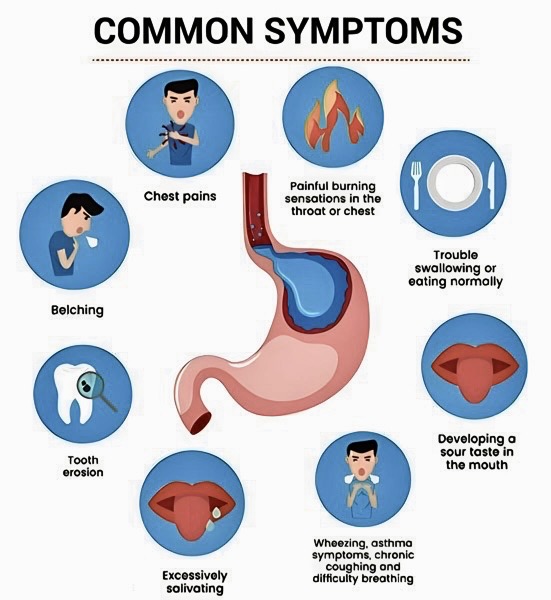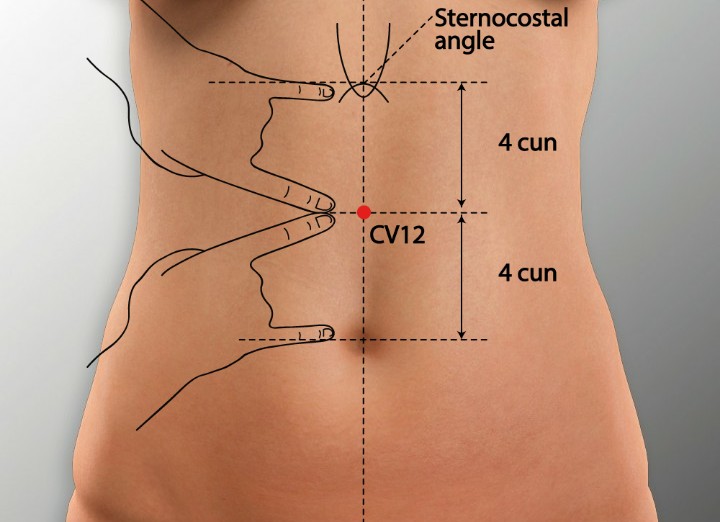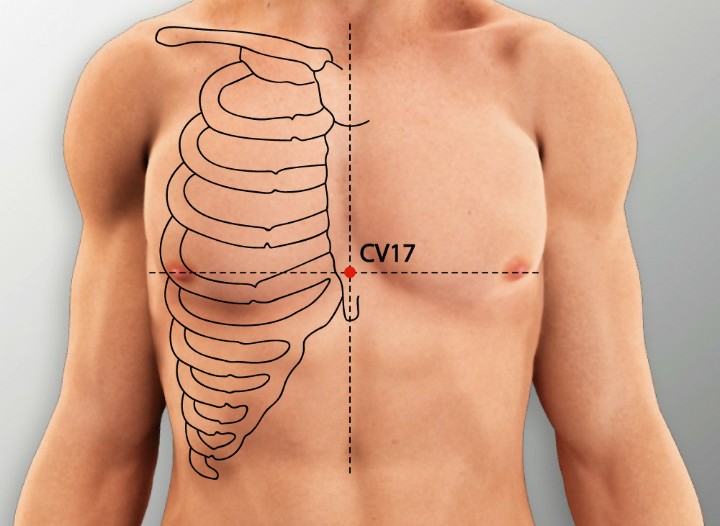Acid Reflux and Acupuncture Treatment in Tokyo
Acid reflux, also known as gastroesophageal reflux disease (GERD), is a common digestive disorder that affects millions of people worldwide. Characterized by a burning sensation in the chest, regurgitation, and discomfort, it can significantly impact quality of life. While conventional treatments like medications and lifestyle changes are widely used, many individuals turn to acupuncture, a time-tested therapy rooted in Traditional Oriental Medicine (TOM), for relief. This comprehensive guide explores acid reflux, the nature of its discomfort, how acupuncture can serve as an effective treatment, and the key acupoints used in therapy. By understanding the condition and acupuncture’s role, patients can make informed decisions about managing their symptoms.
- What is Acid Reflux?
- Causes of Acid Reflux
- Symptoms of Acid Reflux
- Understanding the Discomfort of Acid Reflux
- Types of Discomfort in Acid Reflux
- Why Discomfort Worsens at Night
- Impact on Quality of Life
- How Acupuncture Works
- Acupuncture for Acid Reflux: Benefits and Effectiveness
- Benefits of Acupuncture for Acid Reflux
- Scientific Evidence Supporting Acupuncture
- Acupuncture vs. Conventional Treatments
- Key Acupoints for Acid Reflux
- Additional Acupoints
- Acupuncture Treatment Protocol
- Integrating Acupuncture into a Comprehensive Treatment Plan
- Potential Limitations and Considerations
- Patient Tips for Acupuncture Treatment
- Conclusion
What is Acid Reflux?
Acid reflux occurs when stomach acid or bile flows back into the esophagus, the tube connecting the mouth to the stomach. This backflow irritates the esophageal lining, causing discomfort and, in chronic cases, potential complications. When acid reflux becomes frequent or severe, it is diagnosed as GERD, a chronic condition requiring ongoing management.
Maybe You Need:
Causes of Acid Reflux
Several factors contribute to acid reflux:
- Weak Lower Esophageal Sphincter (LES): The LES is a muscular ring that acts as a valve between the esophagus and stomach. If it weakens or relaxes inappropriately, stomach acid can flow upward.
- Dietary Triggers: Foods like spicy dishes, citrus fruits, tomatoes, caffeine, alcohol, and fatty or fried meals can trigger or worsen reflux.
- Lifestyle Factors: Smoking, overeating, eating close to bedtime, or lying down after meals can increase reflux risk.
- Obesity: Excess weight puts pressure on the stomach, pushing acid into the esophagus.
- Hiatal Hernia: A condition where part of the stomach protrudes through the diaphragm, impairing LES function.
- Pregnancy: Hormonal changes and increased abdominal pressure during pregnancy can cause reflux.
- Medications: Certain drugs, such as NSAIDs, antihistamines, or calcium channel blockers, may relax the LES or irritate the esophagus.
- Stress: Chronic stress can disrupt digestion and exacerbate reflux symptoms.

Symptoms of Acid Reflux
Acid reflux symptoms vary in intensity and frequency but commonly include:
- Heartburn: A burning sensation in the chest, often after eating, that may worsen when lying down.
- Regurgitation: A sour or bitter taste in the mouth from stomach acid backing up into the throat.
- Dysphagia: Difficulty swallowing or a sensation of food being stuck in the throat.
- Chest Pain: Discomfort that may mimic heart-related issues, though not cardiac in origin.
- Chronic Cough or Hoarseness: Irritation of the throat or vocal cords from acid exposure.
- Bloating or Nausea: A feeling of fullness or discomfort in the stomach.
- Sore Throat: Persistent irritation from acid reflux.
Chronic acid reflux can lead to complications like esophagitis, Barrett’s esophagus, or esophageal strictures, making effective management essential.

Understanding the Discomfort of Acid Reflux
The discomfort of acid reflux is multifaceted, involving physical, emotional, and lifestyle impacts. To appreciate how acupuncture can help, it’s important to understand the nature of this discomfort.
Types of Discomfort in Acid Reflux
- Burning Sensation (Heartburn):
- The hallmark of acid reflux, heartburn results from stomach acid irritating the esophageal lining.
- It is often described as a burning or tight feeling in the chest, sometimes radiating to the throat or jaw.
- Heartburn is typically triggered by meals, lying down, or bending over.
- Regurgitation and Sour Taste:
- Regurgitation occurs when acid or partially digested food flows back into the mouth, causing a sour or bitter taste.
- This can lead to discomfort and embarrassment, particularly in social settings.
- Throat and Respiratory Symptoms:
- Acid exposure can irritate the throat, causing soreness, hoarseness, or a persistent cough.
- Some patients experience asthma-like symptoms or worsening of existing respiratory conditions due to acid aspiration.
- Digestive Discomfort:
- Bloating, nausea, or a feeling of fullness often accompany acid reflux, especially after large or triggering meals.
- These symptoms can disrupt appetite and digestion.
Why Discomfort Worsens at Night
Acid reflux symptoms often intensify at night due to:
- Gravity: Lying down allows stomach acid to flow more easily into the esophagus.
- Delayed Gastric Emptying: Digestion slows during sleep, prolonging acid exposure.
- Eating Habits: Consuming large or late meals increases stomach acid production.
Nighttime symptoms can disrupt sleep, leading to fatigue, irritability, and reduced quality of life.
Impact on Quality of Life
Chronic acid reflux can significantly affect daily life, causing:
- Dietary Restrictions: Patients may avoid favorite foods to prevent symptoms, impacting enjoyment of meals.
- Sleep Disturbances: Nighttime reflux can lead to poor sleep quality, affecting energy and mood.
- Emotional Strain: Persistent discomfort may cause anxiety, frustration, or embarrassment, especially if symptoms occur in public.
- Social Limitations: Fear of reflux episodes may limit dining out or social gatherings.
- Work Productivity: Fatigue and discomfort can reduce focus and efficiency.
Given these challenges, finding a treatment that effectively manages symptoms while minimizing side effects is critical. Acupuncture offers a promising, holistic solution.

How Acupuncture Works
Acupuncture is a therapeutic practice involving the insertion of fine, sterile needles into specific points on the body, known as acupoints, to restore balance and promote healing. Originating in China over 2,000 years ago, it is based on the TOM concept of vital energy flowing through meridians. Disruptions in energy flow are believed to cause illness and pain, and acupuncture aims to correct these imbalances.
In modern medicine, acupuncture is recognized for its ability to stimulate the nervous system, modulate pain, and regulate bodily functions. It is widely used for conditions like chronic pain, migraines, anxiety, and digestive disorders, including acid reflux.
Acupuncture’s effects are supported by both TOM principles and scientific mechanisms:
TOM Perspective:
Acid reflux is often attributed to imbalances such as stomach energy rebellion (acid flowing upward), liver energy stagnation (stress-related), or spleen deficiency (poor digestion).
Acupuncture harmonizes energy , regulates stomach function, and clears blockages to alleviate symptoms.
Scientific Perspective:
Nervous System Regulation: Acupuncture stimulates sensory nerves, activating the vagus nerve to regulate gastric motility and acid secretion.
Endorphin Release: Needling triggers the release of endorphins and serotonin, reducing pain and promoting relaxation.
Anti-Inflammatory Effects: Acupuncture decreases pro-inflammatory cytokines, reducing esophageal irritation.
Improved Digestion: By enhancing gastric emptying and LES tone, acupuncture helps prevent acid backflow.
These mechanisms make acupuncture well-suited for addressing the complex symptoms of acid reflux.
Acupuncture for Acid Reflux: Benefits and Effectiveness
Acupuncture is gaining recognition as an effective treatment for acid reflux, offering a non-invasive, low-risk alternative to medications. Its holistic approach addresses both symptoms and underlying causes, making it appealing for patients seeking long-term relief.
Benefits of Acupuncture for Acid Reflux
Symptom Relief:
Acupuncture reduces heartburn, regurgitation, and throat irritation by regulating acid production and esophageal function.
Patients often experience fewer and less severe reflux episodes.
Improved Digestive Health:
By enhancing gastric motility and spleen function (in TOM terms), acupuncture promotes efficient digestion and reduces bloating.
It addresses related issues like nausea and poor appetite.
Reduced Reliance on Medications:
Acupuncture can decrease the need for proton pump inhibitors (PPIs) or H2 blockers, which may cause side effects like nutrient deficiencies or rebound acid production.
This is particularly beneficial for patients seeking drug-free options.
Stress Reduction:
Stress is a known trigger for acid reflux. Acupuncture lowers cortisol levels and promotes relaxation, mitigating stress-related symptoms.
Improved mental health enhances overall quality of life.
Minimal Side Effects:
When performed by a licensed practitioner, acupuncture is safe, with rare side effects like mild bruising or soreness.
It avoids the risks of long-term medication use or invasive procedures.
Holistic Benefits:
Acupuncture supports overall wellness by addressing physical, emotional, and digestive imbalances.
Patients often report better sleep, energy, and mood.

Scientific Evidence Supporting Acupuncture
Research supports acupuncture’s efficacy for acid reflux and GERD:
- A 2018 study in Evidence-Based Complementary and Alternative Medicine found that acupuncture reduced GERD symptoms and improved quality of life compared to placebo.
- A 2020 meta-analysis in The American Journal of Gastroenterology showed that acupuncture, alone or with medications, was effective in reducing acid reflux symptoms and improving esophageal pH levels.
- A 2019 study in Journal of Traditional Oriental Medicine demonstrated that acupuncture enhanced LES pressure and gastric motility, reducing reflux episodes.
- Research in Neurogastroenterology and Motility (2021) indicated that acupuncture modulates vagal nerve activity, improving digestive function in GERD patients.
While larger, high-quality studies are needed, existing evidence suggests acupuncture is a valuable therapy for acid reflux.
Acupuncture vs. Conventional Treatments
Comparing acupuncture to standard treatments highlights its unique benefits:
- Medications: PPIs and H2 blockers reduce acid production but may cause side effects like diarrhea, bone loss, or dependency. Acupuncture offers a natural alternative with fewer risks.
- Antacids: These provide quick relief but don’t address underlying causes. Acupuncture targets root imbalances for sustained benefits.
- Lifestyle Changes: Diet and weight management are effective but may not fully resolve symptoms. Acupuncture complements these by directly regulating digestion.
- Surgery: Procedures like fundoplication are reserved for severe cases and carry risks. Acupuncture is a non-invasive option for mild to moderate GERD.
Acupuncture can be used alone or alongside conventional treatments, depending on symptom severity.
Key Acupoints for Acid Reflux
In TOM, acupoints are selected based on the patient’s symptoms, TOM diagnosis (e.g., stomach energy rebellion, liver energy stagnation), and overall health. For acid reflux, acupoints are chosen to regulate digestion, reduce acid backflow, and relieve stress. Below are key acupoints commonly used, with their locations and effects.
PC6 (Neiguan) – Inner Pass
Location: On the inner forearm, 2 cun above the wrist crease, between the tendons.
Function:
Regulates stomach energy and prevents upward acid flow.
Relieves nausea, chest tightness, and heartburn.
Calms the mind, reducing stress-related reflux.
Application: Ideal for heartburn, regurgitation, and stress-induced symptoms.

ST36 (Zusanli) – Leg Three Miles
Location: On the outer shin, 3 cun below the knee, one finger’s width from the shinbone.
Function:
Strengthens the stomach and spleen, improving digestion.
Reduces bloating, nausea, and acid reflux.
Boosts overall energy and immunity.
Application: Effective for digestive weakness and chronic reflux.
CV12 (Zhongwan) – Middle Cavity
Location: On the midline of the abdomen, 4 cun above the navel.
Function:
Harmonizes the stomach and regulates acid production.
Relieves epigastric pain, bloating, and regurgitation.
Supports gastric motility.
Application: Targets heartburn and upper abdominal discomfort.

SP4 (Gongsun) – Grandfather Grandson
Location: On the inner foot, in the depression distal to the base of the first metatarsal bone.
Function:
Regulates stomach and spleen energy , preventing acid reflux.
Alleviates nausea, bloating, and epigastric pain.
Balances digestion.
Application: Used for digestive symptoms and regurgitation.
LR3 (Taichong) – Great Surge
Location: On the top of the foot, in the depression between the first and second toes.
Function:
Soothes liver energy stagnation, a common cause of stress-related reflux.
Relieves chest tightness and emotional tension.
Promotes smooth energy flow.
Application: Effective for stress-induced reflux and throat irritation.
CV17 (Danzhong) – Chest Center
Location: On the midline of the chest, at the level of the fourth intercostal space.
Function:
Opens the chest, relieving tightness and heartburn.
Regulates energy flow in the digestive system.
Calms the mind and reduces anxiety.
Application: Used for chest pain and stress-related reflux symptoms.

ST44 (Neiting) – Inner Court
Location: On the top of the foot, in the web between the second and third toes.
Function:
Clears stomach heat and inflammation, reducing acid irritation.
Alleviates heartburn and regurgitation.
Supports digestive balance.
Application: Effective for burning sensations and esophageal irritation.
Additional Acupoints
- Local Points: Tender points around the abdomen or chest may be needled to address specific discomfort.
- Distal Points: Points like LI4 (Hegu) on the hand may be used to enhance overall energy flow and pain relief.
Acupuncture Treatment Protocol
A typical acupuncture session for acid reflux involves:
Assessment: The practitioner evaluates symptoms, dietary habits, stress levels, and TOM diagnosis (e.g., stomach heat, spleen deficiency).
Point Selection: A combination of local (abdomen, chest) and distal (arms, legs) acupoints is chosen based on the patient’s condition.
Needling: Fine needles are inserted to depths of 0.5–1 inch, depending on the acupoint. Needles remain in place for 20–30 minutes.
Adjunctive Techniques:
- Electroacupuncture: A mild electrical current enhances stimulation, particularly for chronic symptoms.
- Moxibustion: Burning mugwort near acupoints warms the stomach and improves digestion.
- Auricular Acupuncture: Ear points related to the stomach or esophagus may be used.
Frequency: Treatment is typically 1–2 times per week for 6–12 sessions, with adjustments based on response.

Integrating Acupuncture into a Comprehensive Treatment Plan
Acupuncture works best as part of a holistic approach to managing acid reflux. Combining it with other strategies can enhance symptom control and prevent recurrence.
- Dietary Modifications
- Avoid Triggers: Limit spicy, acidic, fatty, or caffeinated foods and beverages.
- Eat Smaller Meals: Smaller, frequent meals reduce stomach pressure and acid production.
- Timing: Avoid eating 2–3 hours before bedtime to minimize nighttime reflux.
- Complementary Role: Acupuncture reduces digestive sensitivity, making it easier to tolerate dietary changes.
- Lifestyle Changes
- Weight Management: Losing excess weight reduces abdominal pressure on the stomach.
- Posture: Elevating the head of the bed by 6–8 inches during sleep prevents acid backflow.
- Smoking Cessation: Quitting smoking strengthens the LES and reduces irritation.
- Complementary Role: Acupuncture supports stress reduction, aiding adherence to lifestyle changes.
- Stress Management
- Mind-Body Practices: Yoga, meditation, or tai chi reduce stress and complement acupuncture’s calming effects.
- Breathing Exercises: Diaphragmatic breathing can improve LES function.
- Complementary Role: Acupuncture’s stress-relieving effects enhance these practices.
- Conventional Medical Treatments
- Medications: Acupuncture can reduce reliance on PPIs or antacids, minimizing side effects.
- Surgery: For severe cases, acupuncture can manage symptoms pre- or post-operatively.
- Complementary Role: Acupuncture enhances the effectiveness of medical treatments.
Working with Healthcare Providers
Patients should consult a gastroenterologist or primary care physician to rule out complications like Barrett’s esophagus before starting acupuncture. A licensed acupuncturist with experience in digestive disorders should be chosen for safe, effective care. Coordinated communication between providers ensures optimal outcomes.
:max_bytes(150000):strip_icc()/Natural-remedies-for-acid-reflux_color_rev_03_final-2886ac29ad484d18b9397962cd3adabf-c06a5f83c26843488155d7bae5610758.jpg)
Potential Limitations and Considerations
While acupuncture is generally safe and effective, there are some considerations:
- Individual Variability: Response to acupuncture varies based on symptom severity, overall health, and adherence to treatment.
- Temporary Relief: Some patients may need ongoing sessions for sustained benefits.
- Contraindications: Acupuncture should be modified for patients with bleeding disorders, infections at needle sites, or pacemakers (if using electroacupuncture).
- Cost and Accessibility: Insurance coverage for acupuncture varies, and qualified practitioners may not be available in all areas.
Despite these factors, acupuncture remains a low-risk, high-reward option for many acid reflux sufferers.
Patient Tips for Acupuncture Treatment
To maximize the benefits of acupuncture for acid reflux:
- Choose a Qualified Practitioner: Select a licensed acupuncturist certified by a body like the National Certification Commission for Acupuncture and Oriental Medicine (NCCAOM).
- Share Detailed Information: Discuss symptoms, diet, stress, and medication use to guide treatment.
- Follow Recommendations: Attend sessions as prescribed and report changes in symptoms.
- Combine with Self-Care: Adopt dietary and lifestyle changes to enhance acupuncture’s effects.
- Be Patient: Symptom relief may take several sessions, especially for chronic GERD.
Conclusion
Acid reflux is a disruptive condition that affects physical comfort, emotional well-being, and daily life. Acupuncture offers a safe, effective, and holistic approach to managing symptoms by regulating digestion, reducing acid backflow, and alleviating stress. By targeting key acupoints, it provides relief from heartburn, regurgitation, and related discomfort without the risks of long-term medication use. When integrated into a comprehensive treatment plan, acupuncture can help patients regain control over their digestive health and enjoy a better quality of life.
If you’re considering acupuncture for acid reflux, consult a licensed practitioner to create a personalized treatment plan. With the right care, you can find lasting relief and take meaningful steps toward digestive wellness.
Fuji Wellness:
- Address: 132-0031 Matsushima 1-chome, 21-14, Tokyo, Japan
- Chat with us: Click here
- Email: sunnyphamsensei@gmail.com


